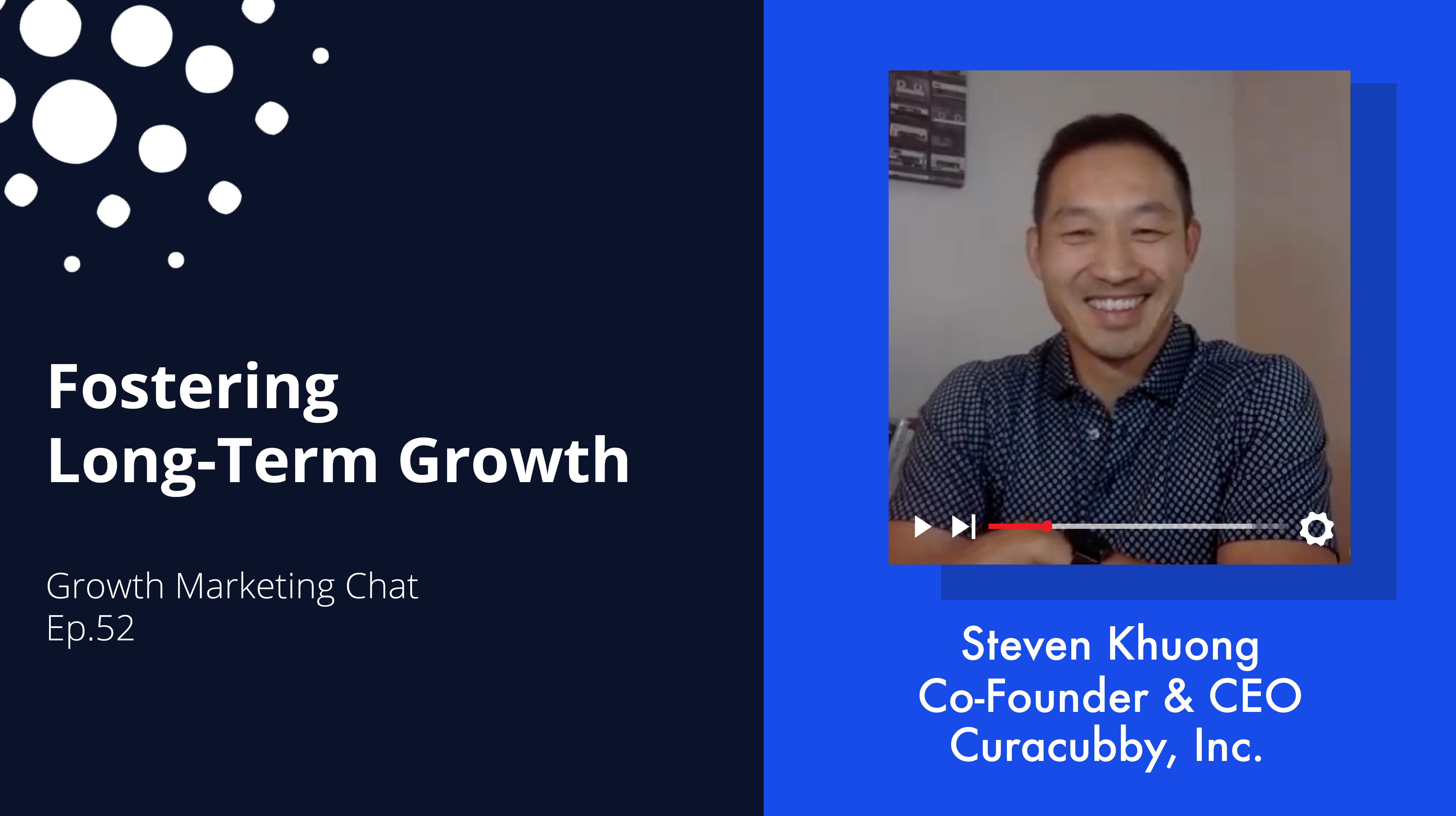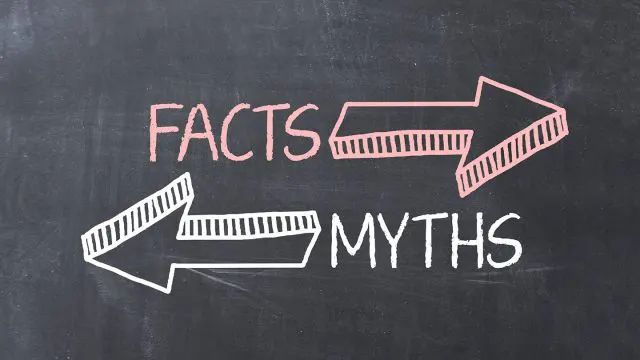Calling all CEOs!
We know you’re busy, but we also know you’re the type that’s always looking for ways to better yourself professionally so you can continue to support and improve your team and drive increased business for your company.
Are we right?
Then look no further.
Essential Growth Marketing Skills for CEOs
President & Funder of Capango, Stefan Midford, shares his experiences and breaks down the top in-demand growth marketing skills all CEOs should have.
This includes:
- Understanding, embodying and aligning your whole team on your core mission
- Learning how to keep messaging in marketing content simple to allow for seamless execution on strategies
- Spending time crafting business goals and objectives and communicating them to your team
Ready to see what marketing skills you may need to brush up on? Tune in now!
Video Transcript:
CAROLINE: Hi, welcome to Growth Marketing Chat. Today I am here with Stefan Midford. Stefan is the CEO, or was the CEO and founder of Natural Insight and he's now the CEO and founder of Capango. I've had the pleasure of working for Stefan for several years, so Stefan, thank you so much for joining and being with me today.
STEFAN: Well, hey, thanks for asking me to join you.
CAROLINE: So today I wanted to ask you about what you've learned about marketing throughout the years of starting and growing your own company and kind of what you think are the important skills that CEOs should have in order to really leverage marketing for growth in our company.
STEFAN: Yeah, and coming from somebody that has worked with me for a long time and the challenges of working with the CEO when you're trying to run the marketing. So I think, you know, first of all, whether in any company, making sure you understand what your core messaging is as the CEO, because that has to come from the top-down, right? What's the vision of what we're doing at a company and what's the reason that you decided to launch the company, you know, the market had a need, there's a sizing to the market, there's a deficiency in the market, and identifying those things to make sure that not just the marketing team, but the customer success team and all the other teams in the company understand the core of what we're trying to accomplish.
CAROLINE: Mm-hmm, yeah, that's extremely important. Without this, really your teams can't execute, can't align properly, or they're gonna do things that don't align with your goals, so you're not gonna get the right results, right?
STEFAN: Right, it's almost like a test of making sure that everybody in the company has the same elevator pitch and describe what you do the same way, right? At Capango, we say, hey, we're like a dating app for finding retail workers for restaurants and retail. Well, in a couple of seconds, we can convey the core message of what do we do, and then what our value proposition has to come into all of the messaging that flows out of that.
CAROLINE: Right, right. And I also really like that you keep it simple, like a lot of companies try to have this like really huge kind of positioning or elevator pitch and then they try to force it on people to like, learn it. It doesn't really work this way, right? You do need to have the true vision and the alignment and you need to keep it simple for people to really, like, embrace it, right?
STEFAN: It has to be super simple. I mean, people only read something for five seconds, right, and they try and absorb, do I care about this in five seconds or six seconds, so you have to either say it or present it to them in that way. So the core messaging has to be spot on, right, and fairly quickly it has to identify what you do and maybe identify what your differentiator is.
CAROLINE: Mm-hmm, yeah, yeah, definitely.
STEFAN: So we found the same thing as we then started to work through detailed messaging, and it was really interesting for us, and we learned some things through this as we started to write messaging guidelines because as you start to get deeper into it, and as a technology company, we all fall victim to, we want to talk about the cool technology we're building, right?
Oh, I added this new button, and gosh, it's gonna be awesome. And really, the clients don't care that you added a button. What they care about is what that button means to them, and so we ended up working through a document that was a very descriptive document that said here's a feature or a function that's a key driver for our business, but here's the messaging, the short messaging and the detailed messaging that goes with it. So in our world, because we're a recruiting app, we said, well, no resumes required, that's the short message. It's the function of we don't allow people to upload resumes to our platform. The short message was no resume required, but the reality was, when we talk to an employer, our message has to be more detailed to say, because we're gonna generate an awesome, consistent resume for every seeker in your platform, and for the job seekers, we had a different message that we had to go out and say, hey, it's, you know, we know that it's difficult to create a resume that's meaningful. We're gonna help you get there.
So it was really interesting for us to go through that exercise and take a feature, describe it quickly, and then really look at who the audience is and how that feature helps that audience, and how did that play into our marketing messaging, but again, that has to come from top down, right? The whole company has to be sort of agreed on that and literally work from the same playbook, and we actually have a written playbook that we work from to try and convey that so everybody does the same thing in the company.
CAROLINE: Mm-hmm. Yeah, yeah. And that's something that we do with all of our clients. We align, we create a messaging document that has all of the audiences and kind of the messages that we can use, and then that allows also testing, right, because then you can try your message and then you see if it resonates or not, and if it doesn't, we can go back and be like, well, we can change it, but it's more like, it's like a scientific experiment, right?
STEFAN: Yeah. Yeah, and even understanding what the goal of the message is, as we were doing some digital things this year, we spent a lot of time differentiating between what were we trying to do that was just brand awareness? We're trying to get our brand out there, and so you can do things in brand awareness, YouTube, you know, quick, fun, 15 second YouTube videos that are really fun and catchy and people want to look at and follow, that's one thing. But then if you're trying to drive an action through digital means, in our case, we're trying to drive a registration in our platform, well those YouTube videos aren't necessarily the right audience for that because they're too catchy, they're too fun, and you might, you might get clicks, you might even get downloads, but you might not get registrations, so then you have to do a much more sophisticated approach of how do you identify that audience that's gonna register and do things. So I think from, again, from a CEO's level to me, the important thing was recognizing when we're spending money on brand awareness and when we're spending money that is a tactical, event-driven thing, and how do we measure that tactical, event driven thing?
CAROLINE: Right, right, right, and, like, aligning with high-level goals, right? If you run a brand awareness campaign, it plays in your long-term strategy while your registration campaigns play in your short-term strategy.
STEFAN: Yep. Yeah, and I think when you think about taking those messages and that perspective out and say, okay, what's the strategy of the company, and particularly as you're, like any technology company, trying to grow your business, it's interesting. I talked to an investor this week who said, yeah, it's amazing to them how many people focus on just the sales team on their growth strategy, and they haven't really looked at their client success or customer success team as part of that strategy, and so they say, hey, somebody will come in with an org chart that'll have, here's my sales team, and it's an amazing sales team, and then you look at the customer success team and it's lower, well, part of a growth strategy and part of the messaging has to be, okay, once we get 'em in the house, who's taking care of them and are they continuing to get the same messaging, right? Does that customer success team have the same materials, the same mindset, the same value proposition that they're using to keep that client in the house?
CAROLINE: Right, right, or even to grow them, right?
STEFAN: Absolutely.
CAROLINE: Yeah, yeah. Yeah, and when I think about growth, I think there's really, I mean, all the teams are really part of growth, right? Product is super important, marketing, sales, and customer success, and if all of this is not in line, that's gonna be gaps.
STEFAN: Yeah, and very often, what I've had in the past, and I know I've done this a number of times, is we get our engineering and product teams working on a new feature, a new function in our technology, and they get roaring down the road of building that thing out, and maybe we're talking about it in the simple, technical terms of what we're doing in the platform, but we really haven't sat down with the marketing team and brought 'em in early to say, well, wait a minute, this new feature is gonna do this, and how do we wanna message it and make sure you build that into everything as you're building the technology, as you're looking at the product roadmap, and then as you're rolling out that feature, are you ready with the right messaging for that feature, so now it's much more, in our world, we try to get the marketing team involved at the front and say, well, here's the big blocks that we're focused on in the next quarter, as far as platform improvements, how's that gonna play to our audience?
What's the message on it, and then how do we schedule that in? Which ones maybe deserve a press release, and which ones deserve a client notification? Which ones deserve a broadcast out to our pipeline, and what's the message in that?
CAROLINE: Yeah, and that's fantastic, and it's not often the case in tech companies, usually marketing is like, kind of at the bottom of the food chain and that creates a lot of problems for marketing teams, so I think that's a really, really good advice to bring marketers in at the beginning. This way they can be aligned, right?
STEFAN: Yep. Yeah, even something as simple as what do you call a feature in your platform or your technology because the engineers will call it what it does. It's just their nature, you know? They're A B oriented, this does this, and this is the name of it, and a marketer might look at that and go, well, yeah, but that's not conveying the business value that we want to convey, so what are we gonna call this function or capability or thing that we're doing that helps our client understand the value we're delivering to them.
CAROLINE: Right, right. Well, fantastic. Fantastic advice. Thank you so much for joining and sharing your insight with us. I think all marketers and all CEOs can really benefit from this, so thank you so much.
STEFAN: My pleasure. Absolutely thrilled to be here.Good luck.





